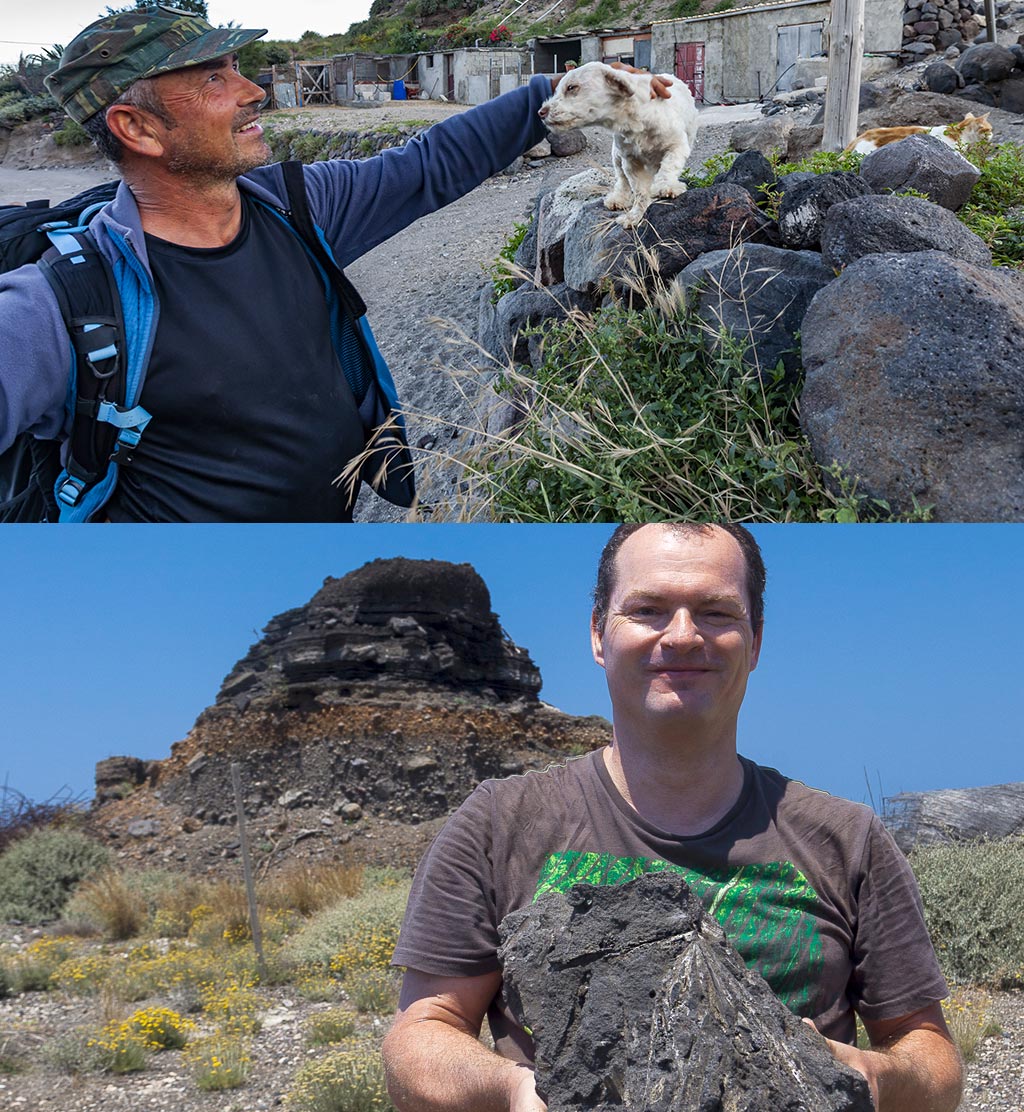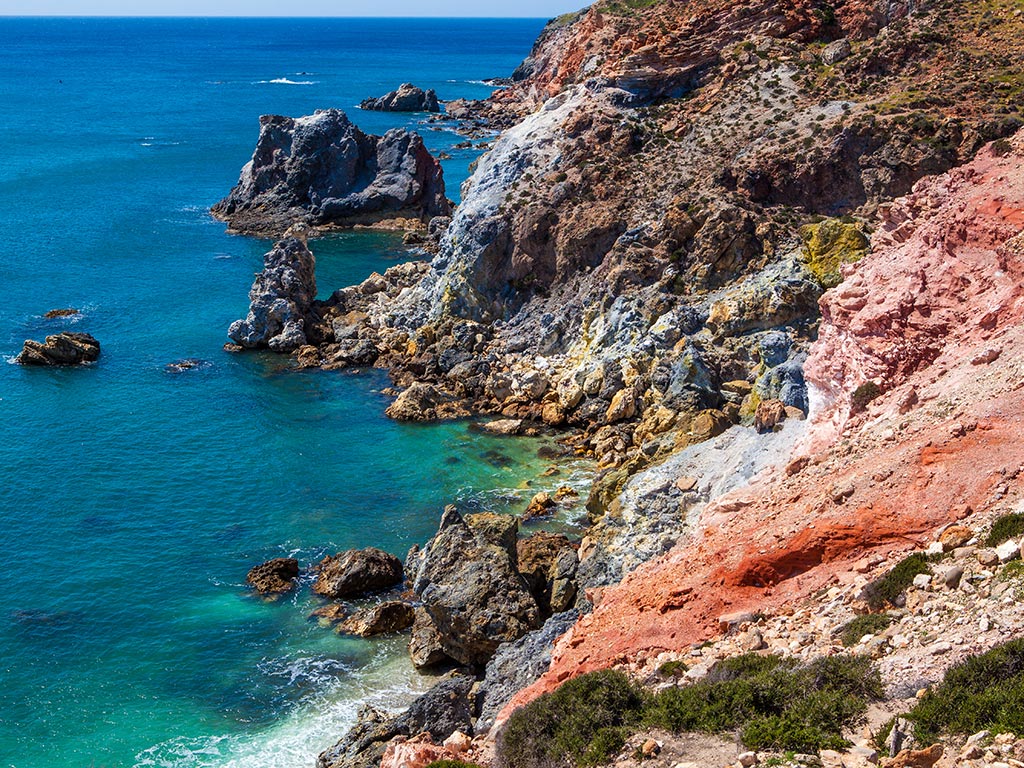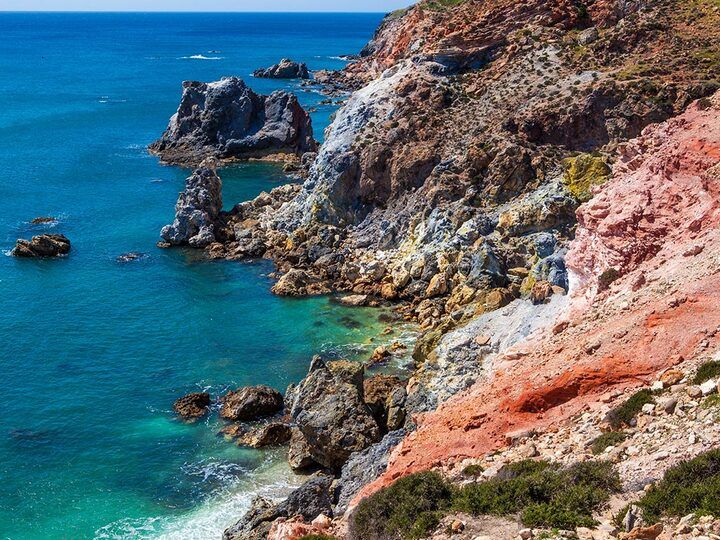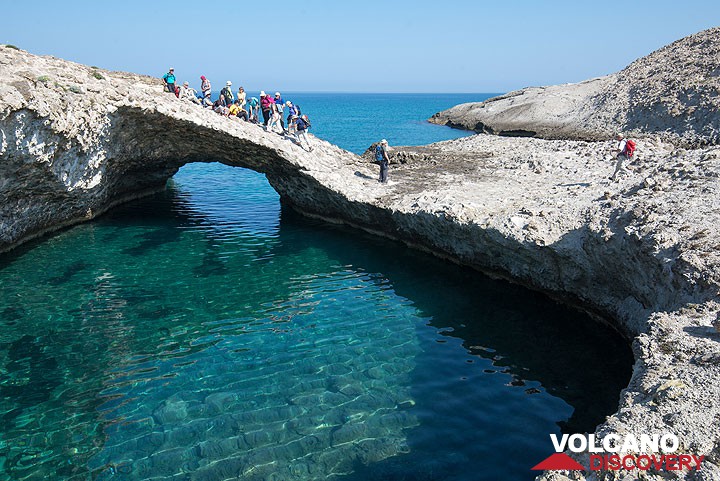3-day private tour on Milos - sample itinerary
Hinweis:
Here's a suggested tour that reveals the best and most interesting sites of geological, natural and historical interest. It can be adapted according to weather, fitness level and personal preferences.
Tag 1: Meeting in Milos at the evening
Meet in a wonderful seaside tavern over dinner and plan the next days in detail.
Tag 2: Abandoned sulfur mine and mineral beach
Start the morning with one of the most intriguing geo-sites of the island – an abandoned sulfur mine on the western coast (spectacular scenery). Head on to the paradise-like beach of Paleochori, with its hot springs, fumaroles, and colorful rocks, that expose the pre-volcanic basement rocks covered by Roman-era volcanic deposits featuring large ancient pottery fragments.
Relax over lunch at a wonderful beach restaurant and take a swim if you feel like it. Take an afternoon walk in the area or visit other places of interest by car.
Return to the main town of Milos, Adamas, in the late afternoon and visit the interesting small Mining Museum before dinner.
Tag 3: Walk over fossilized volcanic seafloor
Take a superb half-day excursion to the spectacular north coast to visit three key geological areas: Phylakopi, the ancient obsidian trade center of the island, the sea caves of Papafrankos and white cliffs of Sarakiniko. Picnic lunch and optional swim at Sarakiniko.
In the afternoon, visit the island's fascinating medieval capital, Plaka, along with its hilltop fortress, early-Christian catacombs, and ancient acropolis with its Greek theater where the famous statue of Venus de Milo was found. Optional scenic hike back to the hotel.
Anreise:
Depends on your arrival at Athens aiport. There are two possibilities how to get to Milos. You can get a direct flight to Milos airport or you can take a ferry boat from Piraeus harbour (about 4-7 h to Milos Island). It is possible to get earlier to Athens and to stay one or more nights there for sightseeing. A hotel room in Athens is about 80-120 € a double room.
Reiseleitung
Die Reise wird normalerweise entweder vom deutschen Vulkanologen Dr. Tom Pfeiffer oder dem deutschen Fotografen und Hobby-Geologen Tobias Schorr geführt. Beide kann man als Spezialisten für die aktiven, griechischen Vulkangebiete bezeichnen. Seit mehr als 20 Jahren bereisen sie regelmäßig mit ihren Reisegruppen alle 4 Vulkangebiete (Méthana, Mílos, Santoríni und Nísyro). DR.Tom Pfeiffer ist nicht nur der Entdecker des fossilen Olivenbaums, der die minoische Eruption Santorínis datieren ließ, sondern er hat auch seine Doktorarbeit über Santoríni geschrieben. Tobias Schorr hat über 10 Jahre auf der Vulkanhalbinsel Méthana gelebt und dort nicht nur den nachhaltigen Fremdenverkehr initiiert,sondern engagiert sich seit mehr als zwei Jahrzehnten für die Region. Er ist DER Kenner der Region und hat ein scharfes Auge für Details, die der normale Besucher übersieht (seltene Tiere, Pflanzen und geologische Funde). Auch die archäologischen Highlights seiner Wahlregion kennt er und hat einige bedeutende Funde gemacht.

Tom and Tobias on Santorini




